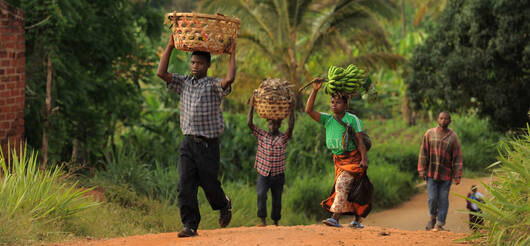Use and perceived importance of forest ecosystem services in rural livelihoods of Chittagong Hill Tracts, Bangladesh
10 December 2019
10 December 2019
This study examines the relative benefits (provisioning) and importance (regulating and cultural) of forest ecosystem services to households in the Chittagong Hill Tracts (CHT) region of Bangladesh. Our results from 300 household interviews in three rural locations stratified by wealth shows that wealth levels of the respondents play a key...
In the 1950s and 1960s, the Republic of Korea was one of the poorest and least developed countries in the world. Deforestation had stripped the country of half its forest cover, contributing to severe erosion, repetitive flood and drought damage and a decrease in agricultural production which threatened national food...
Living in and from the forests of Central Africa
05 December 2019
05 December 2019
Living in and from the forests of Central Africa is intended first and foremost as a full-scale extension tool concerning NWFPs in Central Africa. It is a work on the groups who have always lived in these forests, forests that contribute to every aspect of their daily lives, both material...
Integrated policy for forests, food security and sustainable livelihoods: lessons from the Republic of Korea
05 December 2019
05 December 2019
In the 1950s and 1960s, the Republic of Korea was one of the poorest and least developed countries in the world. Deforestation had stripped the country of half its forest cover, contributing to severe erosion, repetitive flood and drought damage and a decrease in agricultural production which threatened national food...
Boosting income and forest cover in Viet Nam
05 December 2019
05 December 2019
Globally, agriculture remains the most significant driver of global deforestation. Yet in Viet Nam, food security and forest cover have both increased significantly in the last 25 years thanks to economic and agricultural reforms as well as an increased emphasis on community-based forest management. As incomes have risen, forest cover...
Empowering forest communities in The Gambia
05 December 2019
05 December 2019
A nationwide programme to transfer government-owned forest land to local communities is changing lives in The Gambia while promoting the sustainable management of its forests. As communities manage forest affairs and benefit from the proceeds from forest resources, more forest-friendly livelihoods such as beekeeping and soap making are boosting incomes...
State of the World’s Forests 2016: Forests and agriculture - land use challenges and opportunities
05 December 2019
05 December 2019
Agriculture remains the most significant driver of global deforestation. Large-scale commercial agriculture and subsistence agriculture currently account for 73 percent of deforestation in the tropics and subtropics. However, it is possible under certain conditions to achieve sustainable agriculture and food security while also halting deforestation. A new study from FAO...
Sustainable management of Miombo woodlands - Food security, nutrition and wood energy
04 December 2019
04 December 2019
The Miombo woodland is a vast African dryland forest ecosystem covering close to 2.7 million km2 across southern Africa (Angola, Democratic Republic of the Congo, Malawi, Mozambique, Tanzania, Zambia and Zimbabwe). It is estimated that the woodlands sustain the livelihoods of more than 100 million rural poor and 50 million...
Forestry and food security in Nigeria
10 September 2015
10 September 2015
The objectives of the Food Security Project (FSP) are to contribute to sustainable improvement in national food security and poverty eradication on an economically and environmentally sustainable basis. The forestry/agro-forestry sub-component will achieve food security and enhanced environmental quality and public health through tree planting, non-afforestation and wildlife conservation/management. The...
Forest code of the Republic of Kazakhstan
10 September 2015
10 September 2015
The target of forest legislation is to regulate relations regarding ownership, management, disposal of forests for the purpose of ensuring conditions for rising up ecological and resource potential of forests, rational and inexhaustible use of forest resources, conservation, protection and reproduction thereof, strengthening legality in the sphere of forest relations....

